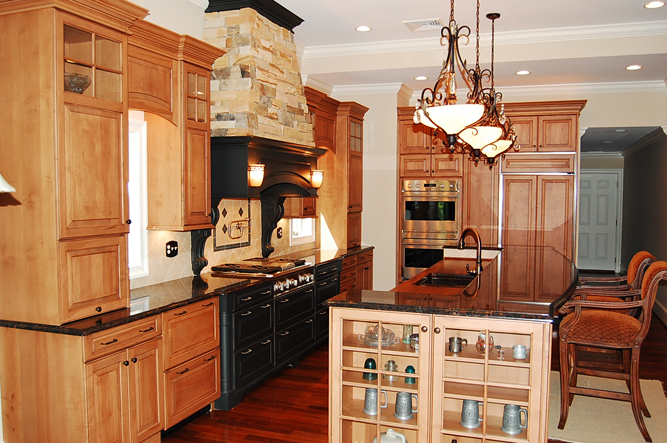Years ago, a potential client came to me and ask whether I thought she should have me design the kitchen first, or let the architect design the space (for an addition/renovation) first. “Well of course the architect should design the space first,” was my reply. As it turns out, that was a test question, the homeowner disagreed, and I didn’t get the job. Even though that particular circumstance was unfortunate for me, I believe the homeowner was drastically wrong.
Kitchen design, and I would suggest any other design work, is never done in a vacuum. Every project has an inherent context. That does not necessarily mean there is a defined physical space. Certainly, walls, windows and doors help define context, but there are other less tangible parameters. Personal taste, budget, physical or functional requirements, existing problems, appliance preferences, code requirements, and many other variables all help define context. In a highly specialized market, and in a market with as many good choices as we have, understanding client priorities is a necessity.
Not everyone’s priorities are the same. There is a tendency in all of us, but especially in the design community, to throw down absolutes from on high and expect that clients will stand back in awe. Fortunately, I do not work for a company, or with associates who operate this way. I have, however, observed this behavior in other professionals. Frequently, I find myself suggesting that there are three major questions that must be answered to have a successful project. They are: How do want your space to look (aesthetic preferences); How do you want your space to “cook” (functional preferences), and; What is your budget (investment preferences)? All other specifics, and sub-questions, generally, will fall under one of those three headings. Every single client is different, and every single project has a different context. Answering those three questions in broad terms first, and eventually in specifics, is necessary.
Having this understanding, does not negate the benefits of designer expertise. Professionals of every industry spend a lot of time, money and effort to become experts. Experience can be beneficial to everyone. Homeowners will have maximum personal benefit when they partner with design professionals.* There are broad-brush principles that are worth keeping in mind in kitchen design. There are recommended spaces, relationships, color combinations and lighting plans. The problem is not with broad principles, but rather the assumption that these guidelines can be shoe horned into every context. When clients and designers communicate freely and openly with each other, all of these considerations can come together harmoniously.1 A kitchen or bath project can genuinely be a team effort with spectacular results.
The project that I mentioned initially is near our office, and as far as I know, never happened. In most cases where an architect is involved in a remodeling project, he or she will be designing the kitchen space in a context as well. The same information gathering components are present for their work, but on a larger scale. In most cases, they will have already established a relationship with the client, and therefore have a working knowledge of the owner’s goals. We work with architects on a regular basis, and we respect their expertise and function, and they respect ours. Our combined talents are different but dovetail nicely. Occasionally, the kitchen designer may drive the placement of the kitchen in the house, or define the space and size. More often, an architect will, again in a larger context, define an area or general direction for us, and then we work within that context. The best projects I do in tandem are usually with an architect that sets some general parameters, expresses his design priorities and vision, and then allows me to work. A team approach in a defined context is terrific.
Not every project will have a “design team.” This may simply be for budget reasons, or perhaps it is just unnecessary. Regardless, the simplest kitchen or bath renovation will still not be in a vacuum. Together the homeowner and designer can define the parameters and then proceed. As in most things, freedom and creativity without boundaries is really just anarchy. Freedom and creativity inside of parameters, in context, is liberating, efficient and productive.

